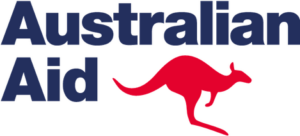Through the ICAM project, CARE works with women and men who are most at risk from the impacts of climate change and natural hazards, to increase the resilience of communities in the Mekong Delta.
Background
Vietnam is one of the world’s most vulnerable countries to the impacts of climate change. Increasingly erratic conditions pose new challenges for the majority of the 17 million residents of the Mekong Delta, who rely on natural resources for their livelihoods. The ability to adapt to climate change is therefore essential for both the survival and development of these communities.
Objective of ICAM
Through ICAM, CARE works with women and men who are most at risk from the impacts of climate change and natural hazards, to increase the resilience of communities in the Mekong Delta.
- Communities and local authorities plan for community-based climate adaptation and disaster risk reduction. Community plans then inform government socio-economic development and sectoral planning, within sectors such as disaster risk reduction, agriculture, and health.
- Communities, especially those most at risk from the impacts of climate change, have improved resilience: their livelihoods are more robust and diversified; and they are more aware of climate change, its impacts, and what to do about it.
- Project learnings, a strengthened civil society, and the capacity of authorities provide a foundation for the scale-up of community-based, equitable, and gender-sensitive adaptation.
How does ICAM work?
| CAPACITY STRENGTHENING FOR COMMUNITIES, AUTHORITIES, AND CIVIL SOCIETY |
MULTIPLYING IMPACT
|
||
|
CLIMATE RESILIENT LIVELIHOODS
|
DISASTER RISK REDUCTION
|
CHANGES IN BEHAVIOR
|
|
|
COMMUNITY-DRIVEN CLIMATE RISK ANALYSIS AND PLANNING
|
|||
Participants of ICAM
| >3.000 women |
>2.000 men |
| living in poverty, and who are at risk from the impacts of climate change: particularly women, the land-poor, and the landless. |
|
Location
33 villages in 5 communes in An Giang and Soc Trang provinces, in the Mekong Delta
Time
7/2012 – 12/2015
Donor

